Nijmegen, Valkhof
Q3921376Nijmegen: city in the Netherlands, where several Roman settlements have been discovered.
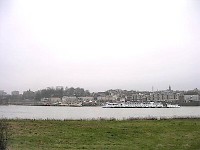
During the second century, Nijmegen was a flourishing town, called Noviomagus. However, in the third century, pressure on the frontiers increased; new Germanic federations, like the Franks, tried to invade the Roman Empire. A capable commander named Postumus was able to reorganize the frontier zone, essentially founding a new, independent empire (the "Gallic Empire"): a sign of the self-confidence of the provincials north of the Alps.
Unfortunately, the "real" Roman Empire did not appreciate Gallic independence, and the emperor Aurelian eliminated the new state. Many troops were killed in the bloody battle of Châlons-sur-Marne, and the frontier was now unguarded. After 275, the Franks were free to invade, and for many years, they roamed through Gallia Belgica. Noviomagus was never rebuilt, and the area of the Lower Rhine was abandoned by the Empire until Constantius I Chlorus restored order.
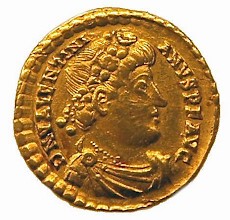
After 300, there were two settlements: a civil one along the river, the continuation of the river port that was already three centuries old and kept the name Noviomagus, and a military one at the Valkhof (map). It measured about 200x250 meter, and was surrounded by two ditches of about 12½ meter wide and 4 meter deep. The construction is generally attributed to Constantine I the Great (r.306-337), who was indeed active in this area until 311.
In the 350s, the Franks were successful again, but the Roman general Julian restored order, and allowed those who had invaded the Empire to stay. From now on, there were Frankish settlements in the Low Countries, like the one identified in the area of the Canisiussingel/Berg en Dalseweg, southeast of the fort at the Valkhof.
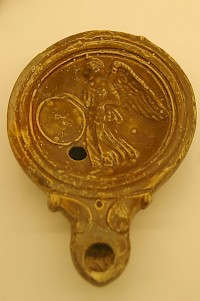
Julian had reached the Rhine, but it was left to later rulers to repair what had been destroyed. The emperor Valentinian I rebuilt the fort at Nijmegen from stone, and also ordered repairs to the road along the Meuse that was vital for reinforcing it in periods of war (e.g., the bridge at Cuijk). Nijmegen was still a very important castle, worth investing in.
The soldiers of the fort were recruited locally, and by 400 the soldiers were, probably, mostly descendants of the Franks who had settled inside the Empire two generations before. They stayed in the castle at the Valkhof when the Roman Empire imploded in the first decade of the fifth century.
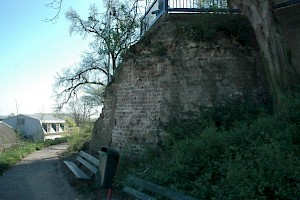
In 405, one of the Germanic tribes crossed the Danube and attacked Italy. The supreme commander of the Roman forces in Europe, Stilicho, transferred the armies of Gaul to northern Italy. He knew that other tribes would cross the Rhine, but Stilicho reckoned that he could deal with them later. It had been done before. But this time, things went wrong. If Stilicho had been been able to concentrate his forces on the two groups of tribes, the crisis might have been averted, but the Roman troops in Britain panicked and crossed to the continent, where their general was recognized as emperor. The mess was now complete; the Romans had to fight at the Danube, at the Rhine, and in Gaul.
Somehow, order was restored in Gaul in 418, but Britain was by now lost, and no longer produced the food that had always been sent to the forts along the Rhine. Everything north of Cologne was now left to the Frankish federates. In Nijmegen, this meant that the last Roman garrison commander became the first lord of an increasingly independent Frankish princedom, minting coins of his own, with the legend Niomago. It cannot have made much difference.

The castle remained in use for a long time, but it is difficult to reconstruct its history. Archaeological research of the site itself is almost impossible; however, the cemetery was discovered after the 1944 bombing of Nijmegen, and there are several tombs of very wealthy Franks, who must have belonged to the elite that was now in charge of Nijmegen. One of the most impressive tombs was found at the Burchtstraat: a grave mound with a diameter of ten meters. The man buried over there must have been the lord of Niomago in c.500, and a contemporary of Clovis, who united all Frankish principalities.
It is interesting to see that in the course of the fourth to sixth century, cremation becomes rare, while people are more often buried with their heads to the west, and with less and less funeral gifts. This has been taken as evidence for the Christianization, but is in fact no conclusive proof.
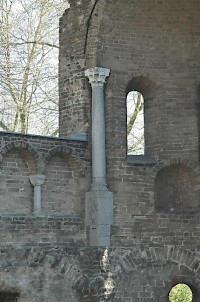
In 777, Charlemagne celebrated Easter in Nijmegen, and ordered a palace to be built over there, which was expanded by later emperors. This palace is the site of the oldest version of the legend of the Knight of the Swan (in the twelfth-century Chanson d'Antioche). It was demolished in 1797, but the late tenth-century chapel of Saint Nicholas and a part of an aula, built by Frederick Barbarossa, have survived. The site is now a charming park, where archeology is impossible.
The only remains from the Roman age can be seen on the northern slope of the Valkhof hill, where the foundations of a tower survive because it was reused as foundation of the palace of Charlemagne and Barbarossa. However, it cannot be excluded that Charlemagne reused old Roman stones, and that the structure is not Roman at all.